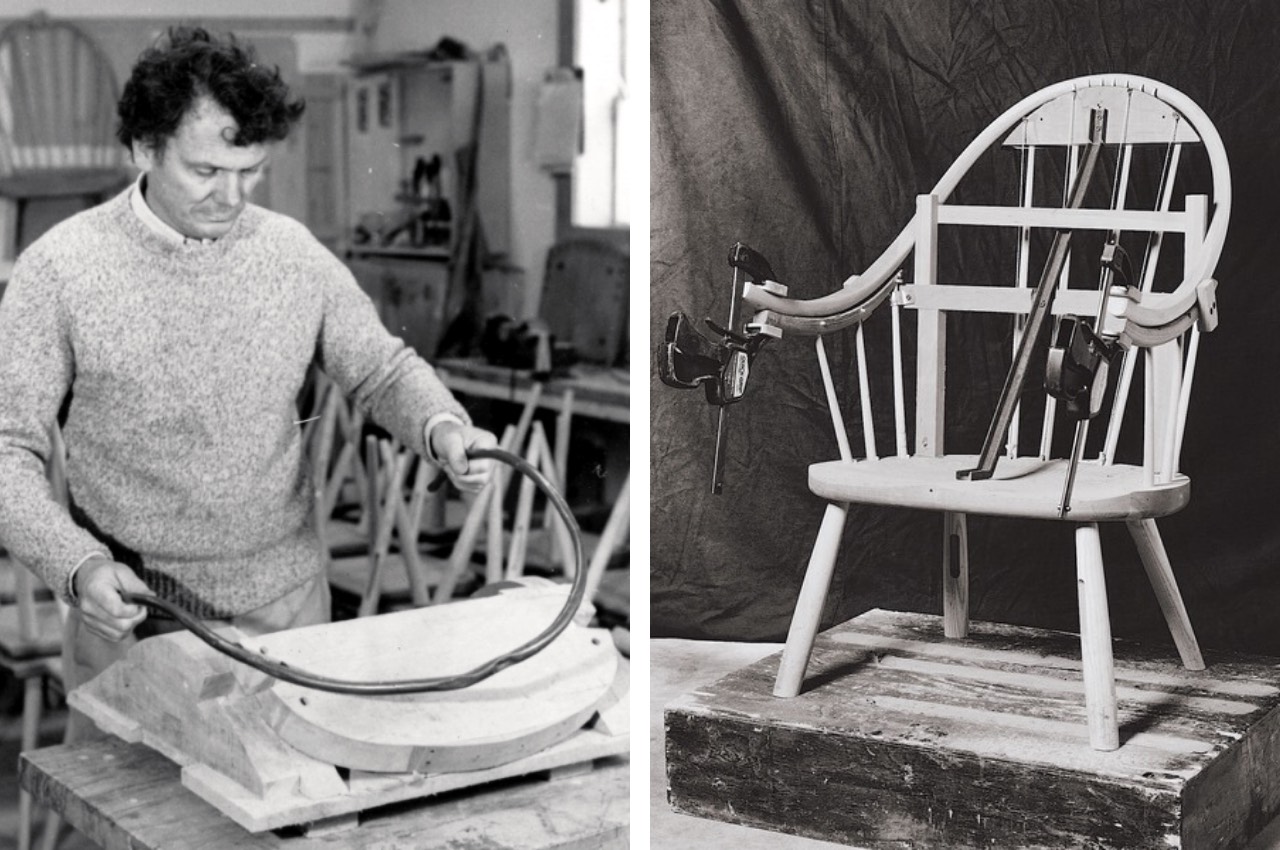In February of 2023, Hagley’s Oral History Project Manager, Ben Spohn, traveled to Maine to visit Tom and Mary Moser at their home. This visit was in tandem with the acquisition of the Thos. Moser Cabinetmakers records documenting the history of the family’s furniture company. The Thos. Moser cabinetmaker company was started in 1972 by Tom and Mary Moser and since then has continued to make and sell handmade furniture inspired by the simplicity of the designs seen in the Shaker community. To further preserve their history, the Mosers reached out to Spohn and arranged oral history interviews.

As part of my work as the Oral History Project Intern this summer, I processed the four interviews done with Tom and Mary Moser. When it comes to processing the interviews, the first, and arguably most time-consuming step, is to proofread and edit the transcript. I begin by doing a preliminary scan through the transcript, using Microsoft Word’s handy find-and-replace tool to cut out filler words such as “um,” “uh,” and “you know.” The standard for transcripts, while not entirely faithful to the words one will hear upon listening to the audio, allows for easier reading. After this, I pull up the audio file in another window, then read the transcript while listening to the audio file. While doing this, I am on the lookout for spoken words that didn’t get translated into text properly. It also means I do a fair amount of pausing to look up the name of a company, place, or person that wasn’t caught correctly by the transcription software.
After the transcript has been edited, I work on creating a biography note for the interviewee and a summary of each interview. The bio note is created by scanning through the interview transcripts as well as the pre-interview notes taken by Ben Spohn. I pick out details mentioned in either place—and even do some digging online—and put together a biography on that person’s life. For the summary, it is exactly as it sounds. I scan through each transcript and create a summary of what is covered in each interview. During my scans of the transcripts, I also make note of keywords that are mentioned frequently or might be useful for anyone listening to or reading the interview.
Once that process is finished, the audio file gets transferred into Hagley’s Oral History Metadata Synchronizer (OHMS) and I can begin indexing. Indexing requires yet another look at the transcripts. During this process, I create a timecode index, including a timestamp of the section, a section title, synopsis, the first few words where the section begins, and the keywords for that section. Indexing, in the words of Ben Spohn, “is more of an art than a science,” meaning there isn’t a strictly right or wrong way to set these sections up. What I tend to stick to is creating a new segment when I feel that the conversation has shifted enough to a different topic that deserves to be separate from the prior segment. Creating a title requires a bit of creativity but starting with the synopsis and building off of the types of information found within each segment certainly helps. Combing through each section more thoroughly to figure out when a new section is due often leads to generating even more keywords.
Though it seems simple enough, the work on this project didn’t run completely without a hitch. As I had a file opened in OHMS and was going to create a new timecode index, I realized an issue: the audio files in OHMS were all shorter than the original audio files. After listening to the files, I was relieved to find we weren’t losing any actual content from the interviews and that nothing was being cut out. The issue instead turned out to be that the clock in OHMS was ticking just a little bit faster, leading to a shortened runtime of between three to six minutes on each file. Thankfully, we caught this issue and are looking into what we can do to fix it.
The interviews with Tom and Mary Moser provide a fascinating look into not only the history of their furniture business, but into their own personal lives and journeys. All four of the Thos. Moser interviews will be available on Hagley’s Digital Archives in late summer.
Nico Tomic is the 2025 Oral History Project Intern at Hagley Museum and Library. He attends the University of Delaware, studying Anthropology and Museum Studies.
